Punit Singh Koura
Jack
Correlating and Predicting Human Evaluations of Language Models from Natural Language Processing Benchmarks
Feb 24, 2025Abstract:The explosion of high-performing conversational language models (LMs) has spurred a shift from classic natural language processing (NLP) benchmarks to expensive, time-consuming and noisy human evaluations - yet the relationship between these two evaluation strategies remains hazy. In this paper, we conduct a large-scale study of four Chat Llama 2 models, comparing their performance on 160 standard NLP benchmarks (e.g., MMLU, ARC, BIG-Bench Hard) against extensive human preferences on more than 11k single-turn and 2k multi-turn dialogues from over 2k human annotators. Our findings are striking: most NLP benchmarks strongly correlate with human evaluations, suggesting that cheaper, automated metrics can serve as surprisingly reliable predictors of human preferences. Three human evaluations, such as adversarial dishonesty and safety, are anticorrelated with NLP benchmarks, while two are uncorrelated. Moreover, through overparameterized linear regressions, we show that NLP scores can accurately predict human evaluations across different model scales, offering a path to reduce costly human annotation without sacrificing rigor. Overall, our results affirm the continued value of classic benchmarks and illuminate how to harness them to anticipate real-world user satisfaction - pointing to how NLP benchmarks can be leveraged to meet evaluation needs of our new era of conversational AI.
Optimizing Pretraining Data Mixtures with LLM-Estimated Utility
Jan 20, 2025Abstract:Large Language Models improve with increasing amounts of high-quality training data. However, leveraging larger datasets requires balancing quality, quantity, and diversity across sources. After evaluating nine baseline methods under both compute- and data-constrained scenarios, we find token-count heuristics outperform manual and learned mixes, indicating that simple approaches accounting for dataset size and diversity are surprisingly effective. Building on this insight, we propose two complementary approaches: UtiliMax, which extends token-based heuristics by incorporating utility estimates from reduced-scale ablations, achieving up to a 10.6x speedup over manual baselines; and Model Estimated Data Utility (MEDU), which leverages LLMs to estimate data utility from small samples, matching ablation-based performance while reducing computational requirements by $\sim$200x. Together, these approaches establish a new framework for automated, compute-efficient data mixing that is robust across training regimes.
The Llama 3 Herd of Models
Jul 31, 2024Abstract:Modern artificial intelligence (AI) systems are powered by foundation models. This paper presents a new set of foundation models, called Llama 3. It is a herd of language models that natively support multilinguality, coding, reasoning, and tool usage. Our largest model is a dense Transformer with 405B parameters and a context window of up to 128K tokens. This paper presents an extensive empirical evaluation of Llama 3. We find that Llama 3 delivers comparable quality to leading language models such as GPT-4 on a plethora of tasks. We publicly release Llama 3, including pre-trained and post-trained versions of the 405B parameter language model and our Llama Guard 3 model for input and output safety. The paper also presents the results of experiments in which we integrate image, video, and speech capabilities into Llama 3 via a compositional approach. We observe this approach performs competitively with the state-of-the-art on image, video, and speech recognition tasks. The resulting models are not yet being broadly released as they are still under development.
Llama 2: Open Foundation and Fine-Tuned Chat Models
Jul 19, 2023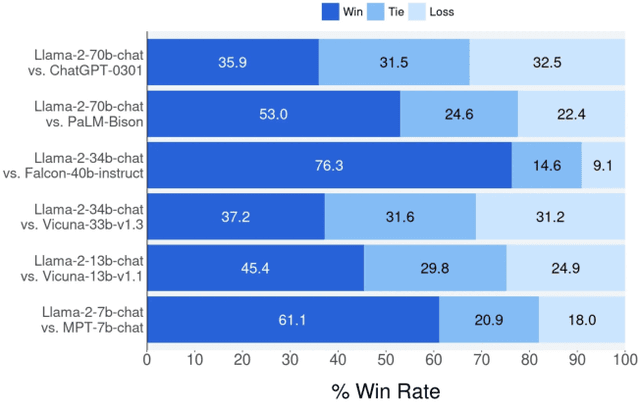

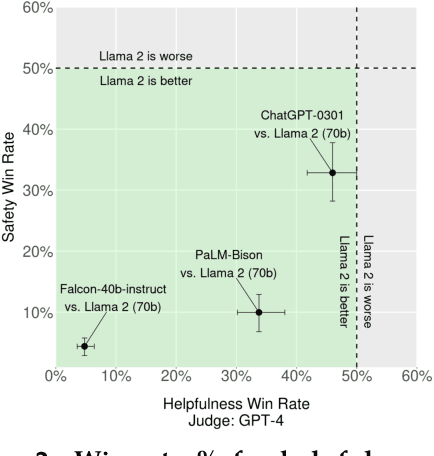

Abstract:In this work, we develop and release Llama 2, a collection of pretrained and fine-tuned large language models (LLMs) ranging in scale from 7 billion to 70 billion parameters. Our fine-tuned LLMs, called Llama 2-Chat, are optimized for dialogue use cases. Our models outperform open-source chat models on most benchmarks we tested, and based on our human evaluations for helpfulness and safety, may be a suitable substitute for closed-source models. We provide a detailed description of our approach to fine-tuning and safety improvements of Llama 2-Chat in order to enable the community to build on our work and contribute to the responsible development of LLMs.
A Theory on Adam Instability in Large-Scale Machine Learning
Apr 25, 2023



Abstract:We present a theory for the previously unexplained divergent behavior noticed in the training of large language models. We argue that the phenomenon is an artifact of the dominant optimization algorithm used for training, called Adam. We observe that Adam can enter a state in which the parameter update vector has a relatively large norm and is essentially uncorrelated with the direction of descent on the training loss landscape, leading to divergence. This artifact is more likely to be observed in the training of a deep model with a large batch size, which is the typical setting of large-scale language model training. To argue the theory, we present observations from the training runs of the language models of different scales: 7 billion, 30 billion, 65 billion, and 546 billion parameters.
OPT-IML: Scaling Language Model Instruction Meta Learning through the Lens of Generalization
Dec 28, 2022



Abstract:Recent work has shown that fine-tuning large pre-trained language models on a collection of tasks described via instructions, a.k.a. instruction-tuning, improves their zero and few-shot generalization to unseen tasks. However, there is a limited understanding of the performance trade-offs of different decisions made during the instruction-tuning process. These decisions include the scale and diversity of the instruction-tuning benchmark, different task sampling strategies, fine-tuning with and without demonstrations, training using specialized datasets for reasoning and dialogue, and finally, the fine-tuning objectives themselves. In this paper, we characterize the effect of instruction-tuning decisions on downstream task performance when scaling both model and benchmark sizes. To this end, we create OPT-IML Bench: a large benchmark for Instruction Meta-Learning (IML) of 2000 NLP tasks consolidated into task categories from 8 existing benchmarks, and prepare an evaluation framework to measure three types of model generalizations: to tasks from fully held-out categories, to held-out tasks from seen categories, and to held-out instances from seen tasks. Through the lens of this framework, we first present insights about instruction-tuning decisions as applied to OPT-30B and further exploit these insights to train OPT-IML 30B and 175B, which are instruction-tuned versions of OPT. OPT-IML demonstrates all three generalization abilities at both scales on four different evaluation benchmarks with diverse tasks and input formats -- PromptSource, FLAN, Super-NaturalInstructions, and UnifiedSKG. Not only does it significantly outperform OPT on all benchmarks but is also highly competitive with existing models fine-tuned on each specific benchmark. We release OPT-IML at both scales, together with the OPT-IML Bench evaluation framework.
OPT: Open Pre-trained Transformer Language Models
May 05, 2022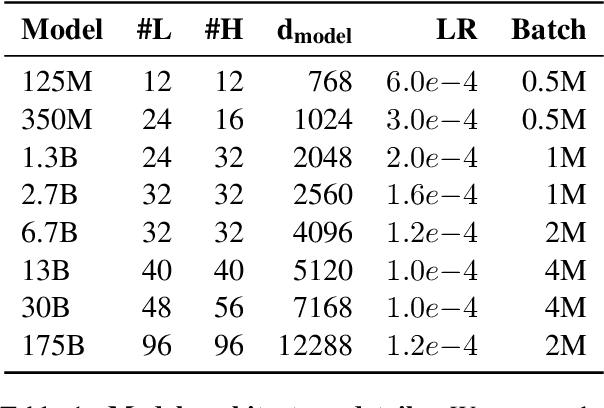
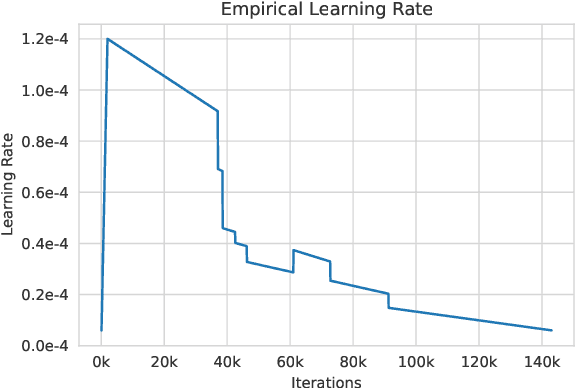
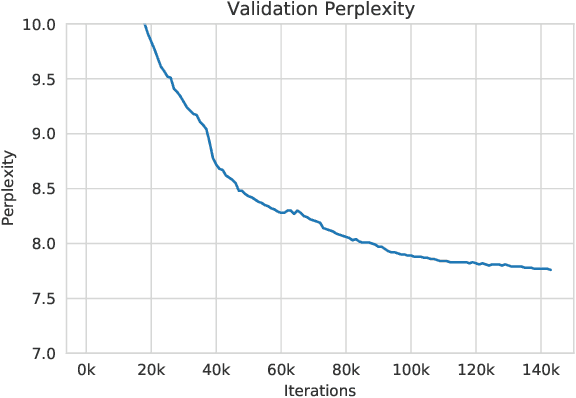

Abstract:Large language models, which are often trained for hundreds of thousands of compute days, have shown remarkable capabilities for zero- and few-shot learning. Given their computational cost, these models are difficult to replicate without significant capital. For the few that are available through APIs, no access is granted to the full model weights, making them difficult to study. We present Open Pre-trained Transformers (OPT), a suite of decoder-only pre-trained transformers ranging from 125M to 175B parameters, which we aim to fully and responsibly share with interested researchers. We show that OPT-175B is comparable to GPT-3, while requiring only 1/7th the carbon footprint to develop. We are also releasing our logbook detailing the infrastructure challenges we faced, along with code for experimenting with all of the released models.
Efficient Large Scale Language Modeling with Mixtures of Experts
Dec 20, 2021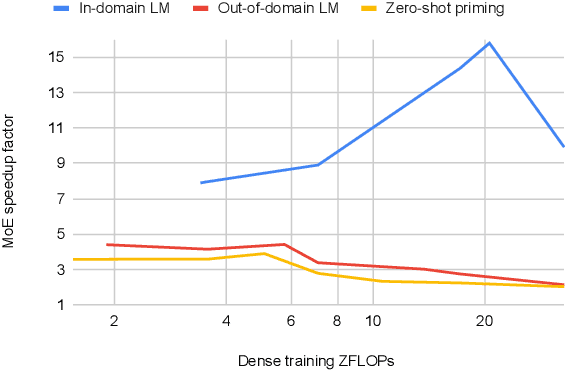

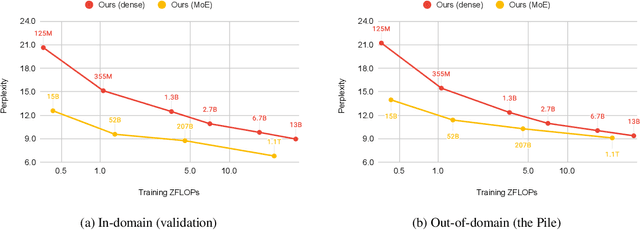
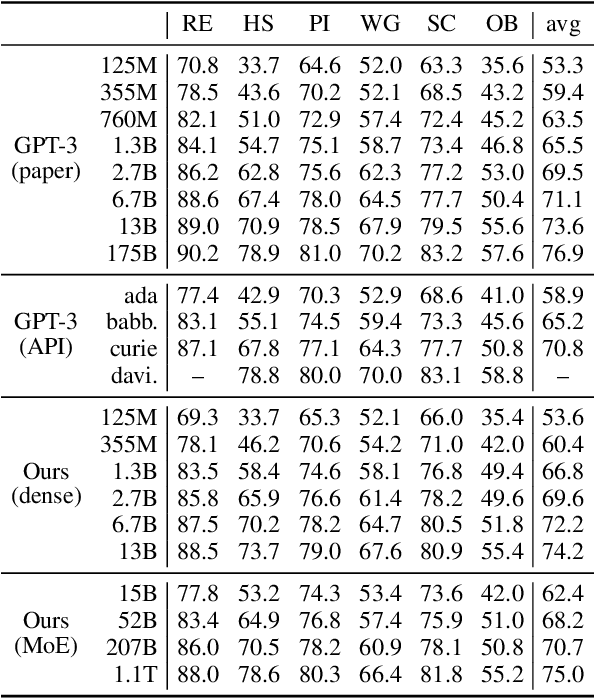
Abstract:Mixture of Experts layers (MoEs) enable efficient scaling of language models through conditional computation. This paper presents a detailed empirical study of how autoregressive MoE language models scale in comparison with dense models in a wide range of settings: in- and out-of-domain language modeling, zero- and few-shot priming, and full fine-tuning. With the exception of fine-tuning, we find MoEs to be substantially more compute efficient. At more modest training budgets, MoEs can match the performance of dense models using $\sim$4 times less compute. This gap narrows at scale, but our largest MoE model (1.1T parameters) consistently outperforms a compute-equivalent dense model (6.7B parameters). Overall, this performance gap varies greatly across tasks and domains, suggesting that MoE and dense models generalize differently in ways that are worthy of future study. We make our code and models publicly available for research use.
Few-shot Learning with Multilingual Language Models
Dec 20, 2021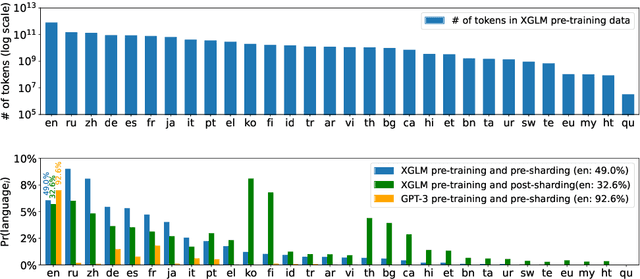
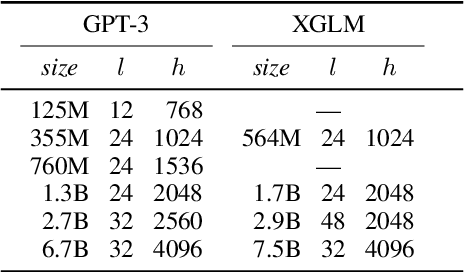
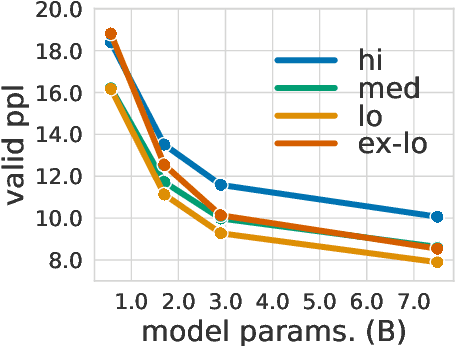

Abstract:Large-scale autoregressive language models such as GPT-3 are few-shot learners that can perform a wide range of language tasks without fine-tuning. While these models are known to be able to jointly represent many different languages, their training data is dominated by English, potentially limiting their cross-lingual generalization. In this work, we train multilingual autoregressive language models on a balanced corpus covering a diverse set of languages, and study their few- and zero-shot learning capabilities in a wide range of tasks. Our largest model with 7.5 billion parameters sets new state of the art in few-shot learning in more than 20 representative languages, outperforming GPT-3 of comparable size in multilingual commonsense reasoning (with +7.4% absolute accuracy improvement in 0-shot settings and +9.4% in 4-shot settings) and natural language inference (+5.4% in each of 0-shot and 4-shot settings). On the FLORES-101 machine translation benchmark, our model outperforms GPT-3 on 171 out of 182 translation directions with 32 training examples, while surpassing the official supervised baseline in 45 directions. We present a detailed analysis of where the model succeeds and fails, showing in particular that it enables cross-lingual in-context learning on some tasks, while there is still room for improvement on surface form robustness and adaptation to tasks that do not have a natural cloze form. Finally, we evaluate our models in social value tasks such as hate speech detection in five languages and find it has limitations similar to comparable sized GPT-3 models.
 Add to Chrome
Add to Chrome Add to Firefox
Add to Firefox Add to Edge
Add to Edge